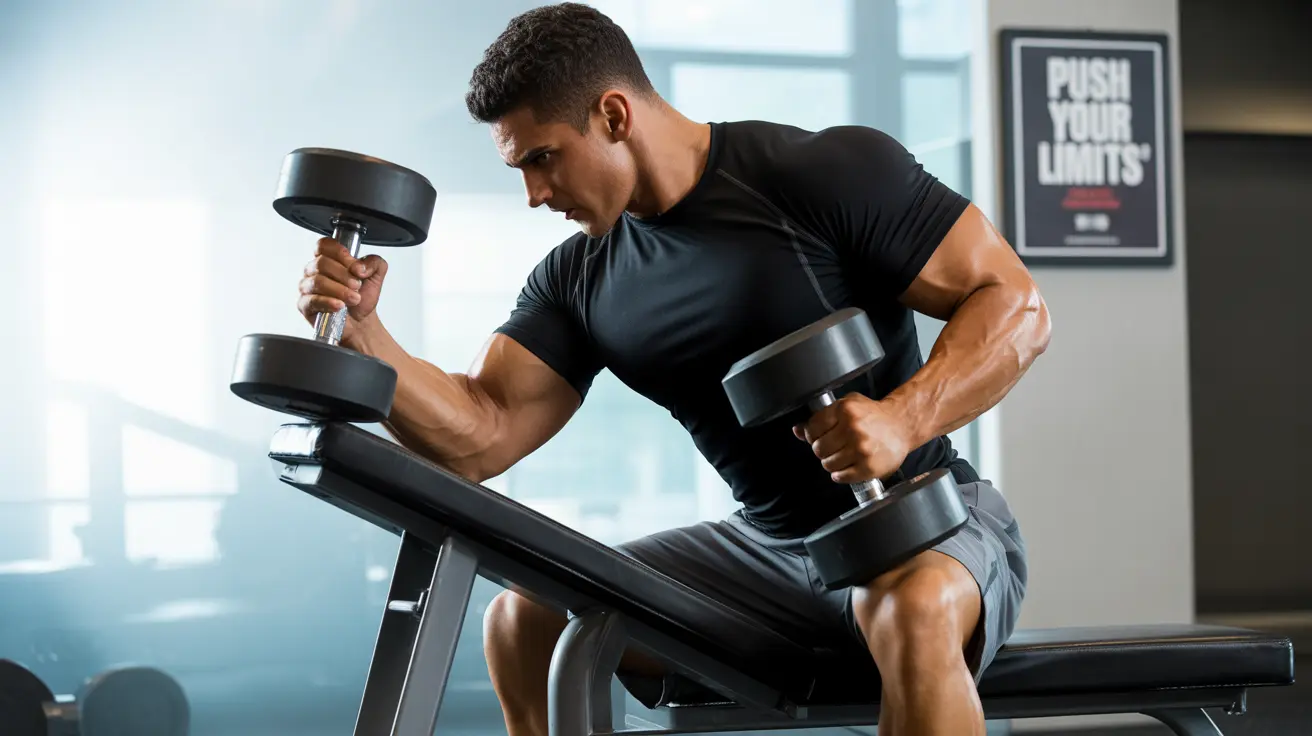The incline dumbbell curl is a powerful variation of the traditional biceps curl that can significantly enhance your arm development. By positioning your body at an angle, this exercise creates unique mechanical advantages that target your biceps muscles in ways that other curl variations cannot match. Understanding the muscles worked and proper execution is crucial for maximizing the benefits of this exercise.
Understanding the Primary Muscles Targeted
The incline dumbbell curl primarily targets the following muscle groups:
- Long head of the biceps brachii
- Short head of the biceps brachii
- Brachialis
- Brachioradialis
The inclined position particularly emphasizes the long head of the biceps, which contributes significantly to the peaked appearance many athletes desire. This emphasis occurs because the incline position creates an extended range of motion and increased stretch on the biceps muscle.
Proper Form and Execution Technique
To perform the incline dumbbell curl effectively:
- Set an adjustable bench to a 45-60 degree angle
- Sit with your back firmly against the pad
- Allow your arms to hang straight down, fully extended
- Hold dumbbells with a supinated (palms-up) grip
- Curl the weights up in a controlled manner
- Pause briefly at the top of the movement
- Lower the weights slowly back to the starting position
Maintaining strict form is essential for maximizing muscle activation and preventing injury. Avoid swinging or using momentum to lift the weights.
Benefits of the Incline Position
The incline position offers several unique advantages:
- Enhanced stretch at the bottom of the movement
- Reduced ability to cheat or use momentum
- Greater isolation of the biceps muscles
- Improved mind-muscle connection
- More effective targeting of the long head of the biceps
Weight Selection and Progressive Overload
When performing incline dumbbell curls, you'll typically need to use lighter weights than with traditional standing curls. This reduction in weight is due to:
- The increased stretch position
- Greater isolation of the target muscles
- Reduced ability to use body momentum
- Enhanced focus on proper form
Start with weights that allow you to perform 10-12 controlled repetitions with perfect form. Gradually increase the weight as your strength improves.
Programming and Implementation
To incorporate incline dumbbell curls effectively into your routine:
- Perform 3-4 sets of 10-12 repetitions
- Include them early in your biceps workout when fresh
- Allow 48-72 hours between biceps training sessions
- Focus on quality repetitions over heavy weight
- Consider super-setting with triceps exercises for efficiency
Frequently Asked Questions
What muscles does the incline dumbbell curl primarily work and why is it effective for biceps peak?
The incline dumbbell curl primarily works the biceps brachii, with special emphasis on the long head. The incline position creates an extended range of motion and increased stretch, which particularly targets the portion of the biceps responsible for the peaked appearance.
How do you properly perform an incline dumbbell curl to maximize biceps activation?
Set the bench at 45-60 degrees, sit with your back supported, let your arms hang fully extended, and curl the weights using a controlled motion with palms facing up. Focus on squeezing the biceps at the top and maintaining a slow, controlled negative portion of the movement.
What are the benefits of incline dumbbell curls compared to standing or preacher curls?
Incline dumbbell curls offer greater isolation of the biceps, reduced cheating potential, enhanced stretch at the bottom position, and better targeting of the long head of the biceps compared to other variations.
Why do incline dumbbell curls require lighter weights than other bicep curl variations?
Lighter weights are necessary because the incline position eliminates momentum and body English, creating greater isolation and mechanical disadvantage. This makes the exercise more challenging with lighter weights.
How does the incline position affect the range of motion and muscle stretch during dumbbell curls?
The incline position increases the range of motion at the bottom of the movement, creating a greater stretch on the biceps. This enhanced stretch position contributes to more effective muscle development and peak contraction.




